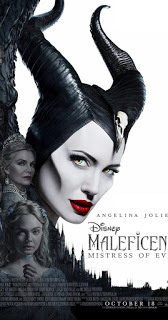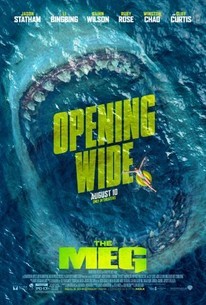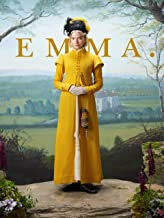Fiona Ingram's Blog, page 27
February 25, 2021
TV Series: Why I Stopped Watching Madam Secretary

I came late to Madam Secretary and loved it until halfway through series 4, when Nadine left and the script took a decidedly radical left wing/woke/loony liberal swing. On the plus side, the cast is perfect and there are some lovable characters like Blake, Matt, Daisy, Mike B (let's not forget canines Gordon and Waffles) et al. Tea Leoni and Tim Daly are a real-life handsome couple and they have the right charisma and spark between them to make the screen relationship credible. Their family is played by great young actors who are all so believable. Pres. Dalton and Russell Jackson (who has some of the best lines delivered with Machiavellian and devilish charm) are also excellent. The problem is the consist playing on left wing social themes and dragging these into the politics of the script. Viewers have it drummed into their heads that unless they go along with the woke policies the producers are clearly espousing, they, like the 'bad' characters, are racist/bigots/Nazis or worse.
The stories got so boring after a while that, sadly, I did not even finish Series 5 and I am disappointed - but I could not sit through yet another episode of woke virtue signaling. The character of Kat Sandoval was a mystery to me and a shabby replacement for Nadine played with such charm and grace by Bebe Neuwirth. Kat's gender confusion, bad wardrobe, and hideous hairstyle says nothing about the character except she was clearly the LGBTQ poster 'girl' for the series. The actor played her with enthusiasm and energy and that's all credit to the performer. But producers need to reassess what an audience wants. If you have a political series, keep it that way. (Another good production that went down the same dismal woke drain was the third series of Designated Survivor with a dreadful last season that alienated viewers and played out every possible left liberal policy imaginable.) Back to Madam Secretary, I could not believe they even had that insufferable Hilary Clinton on the show. That was just too much for me. 3/5
February 4, 2021
Book Review: Ethan Murphy and the Quest for the Minal
 Ethan Murphy is just an average boy living an average life… or so he thought. The only thing marring it is the fact that his dad broke a promise. Four years earlier, he promised to come back from one of his expeditions and never did. On Ethan’s thirteenth birthday he receives a gift from his grandfather, a very strange gift of some of his father’s belongings and an invitation to visit his grandfather’s house. That visit changes everything for Ethan who discovers that his archaeologist father was far more than that, his Aunt Matilda has been kidnapped, and that his family is involved in a secret organization! Moreover, his dad went missing while searching for a fabulous emerald, the Minal, supposedly belonging to Cleopatra. From an ordinary boy Ethan is turned into an extraordinary young investigator, relying on his wits, his skill in solving puzzles and acrostics, and his love for his family. With two new agents helping Ethan, this team of young agents must survive encounters with the bad guys, work out some very cryptic clues left by Ethan’s father, rescue Aunt Matilda, and retrieve the Minal before it falls into the wrong hands. When Ethan must finally go it alone, can he do it? Who can he trust? Who is a friend and who is a foe? Can he save his aunt and his new friends?
Ethan Murphy is just an average boy living an average life… or so he thought. The only thing marring it is the fact that his dad broke a promise. Four years earlier, he promised to come back from one of his expeditions and never did. On Ethan’s thirteenth birthday he receives a gift from his grandfather, a very strange gift of some of his father’s belongings and an invitation to visit his grandfather’s house. That visit changes everything for Ethan who discovers that his archaeologist father was far more than that, his Aunt Matilda has been kidnapped, and that his family is involved in a secret organization! Moreover, his dad went missing while searching for a fabulous emerald, the Minal, supposedly belonging to Cleopatra. From an ordinary boy Ethan is turned into an extraordinary young investigator, relying on his wits, his skill in solving puzzles and acrostics, and his love for his family. With two new agents helping Ethan, this team of young agents must survive encounters with the bad guys, work out some very cryptic clues left by Ethan’s father, rescue Aunt Matilda, and retrieve the Minal before it falls into the wrong hands. When Ethan must finally go it alone, can he do it? Who can he trust? Who is a friend and who is a foe? Can he save his aunt and his new friends? What a rollicking adventure! Ethan Murphy and the Quest for the Minal is full of action, many surprising twists and turns, nail-biting suspense, danger, history, mystery, and intrigue. The journey takes them to Egypt, and into a completely different geographical location, one they have never experienced before. Author Anita Mishra perfectly captures the mindset of this reluctant young hero and his compadres and the dialogues reflect teen concerns. Readers who are explorers at heart, who love mysteries, riddles and clues, and enjoy deciphering codes will devour this book. The puzzles are cryptic indeed, the clues are confusing at times, and time is running out! The dangers come thick and fast and Ethan must get to the bottom of the mystery because lives are at stake.
Themes include loyalty, family, trust, betrayal and disillusionment, as well as courage, perseverance and hope, and not forgetting staying alive. I also really enjoyed the fact that there are no electronic communication devices (you never know who can hack in) so Ethan and his friends must work things out the old-fashioned way, using their minds. Egypt is a fascinating place and for the young reader interested in geography, new cultures, and faraway places, this is the perfect story to whisk them off to an ambiance of mystery and mayhem. A five-star story!
January 25, 2021
Movies to (absolutely!) Miss!

The Fatman: It's been a long time since Santa left me gifts under the tree but I sure as hell would not want Mel Gibson doing this. Long story short: a spoiled, precocious brat gets a lump of coal for Xmas, so he hires a hit man to take out Santa. Said hit man has also been short-changed by Santa and he has a unique hobby to make up for it. No spoilers here... Technicals, setting, atmosphere and photography are good. Just no credibility in the plot. Mel Gibson played himself. Tired, cynical, ageing, washed-up, overweight, bitter etc. Walter Goggins absolutely stole the show as the assassin. He has energy and the camera loves him. I loved him in Justified with Timothy Olyphant and here he shines as well, perhaps playing the roles closest to his heart. Sadly, although Marianne Jean-Baptiste is a good actress, there was utterly no spark or charisma between her and Mel Gibson. She looked utterly bored and indifferent. It's as if they were acting in two different spheres. Could be.... The story is dark and murderous and there's lots of gore. On a lighter note, the elves are hilarious! The spoiled brat is devilishly Machiavellian. 2/5

Breach: What was Bruce Willis thinking when he signed up to star in this drek? The story is paper thin and is a mishmash of all the other iconic sci-fi movies that have gone before. Alien seems to have been the biggest influence with World War Z thrown in and a touch of The Strain. But all these other movies are Oscar-worthy compared with this nonsense. The special effects are abysmal, and the final 'monster' is so laughable that it looks like a child's junior school project. Thomas Jane is usually a good actor but even here he fails. The script was so dreadful that even the best among this rag-tag bunch could not make things work. Direction and action scenes utterly pathetic. Bruce Willis plays Clay, a washed-up military guy who is washed-up because he refused to fire on protestors (woke red flag here!) and lost his career. Bitter, alcoholic and definitely not interested in life, Willis comes across as playing the character a bit too whole-heartedly, seeming to be completely bored with his part and mumbling most of his lines. Maybe it was the moonshine made from ultra-acidic cleaning liquid? He also affects a wooden countenance or is this how he acts nowadays. The premise of the whole story is very weak, and it doesn't take a rocket scientist to work out what will kill the alien intruder.... The ending was so pathetic I felt insulted as a viewer. Don't waste your time or money. 1/5
 Maleficent 2: This movie is like candy floss (aka cotton candy) - lots of pink, fluffy stuff, odiously sweet and totally lacking in substance. I don't know why Angelina Jolie is in the movie because either she can't act, or she did not feel like acting, or she did not think acting was required, just floating around in a variety of fantasy dresses and weird headgear, pouting, smiling (she has a lot of teeth!), staring, winking, et al. Thank heavens Michelle Pfeiffer, who is not only a beautiful but talented actress with a knack for comedy, was around to actually keep the movie going. The young leads were predictable, anguished, boring and eminently forgettable. The Moors' fantasy creatures were adorable. The winged creatures were incredible and made Jolie look like a chump. A lot of fighting going on which I thought was too much for a children's movie or is it? Same old oft-repeated tropes from other movies, especially the death scene taking moments from Avatar. I am a Disney fan (loved Aladdin) but this was almost an homage to Jolie who just wants to look beautiful and ethereal...unlike Pfeiffer who doesn't mind falling face down in the dirt. Favourites in order of appearance: Michelle Pfeiffer as the wicked queen, the elf in the dungeon, the goat at the end... 3/5
Maleficent 2: This movie is like candy floss (aka cotton candy) - lots of pink, fluffy stuff, odiously sweet and totally lacking in substance. I don't know why Angelina Jolie is in the movie because either she can't act, or she did not feel like acting, or she did not think acting was required, just floating around in a variety of fantasy dresses and weird headgear, pouting, smiling (she has a lot of teeth!), staring, winking, et al. Thank heavens Michelle Pfeiffer, who is not only a beautiful but talented actress with a knack for comedy, was around to actually keep the movie going. The young leads were predictable, anguished, boring and eminently forgettable. The Moors' fantasy creatures were adorable. The winged creatures were incredible and made Jolie look like a chump. A lot of fighting going on which I thought was too much for a children's movie or is it? Same old oft-repeated tropes from other movies, especially the death scene taking moments from Avatar. I am a Disney fan (loved Aladdin) but this was almost an homage to Jolie who just wants to look beautiful and ethereal...unlike Pfeiffer who doesn't mind falling face down in the dirt. Favourites in order of appearance: Michelle Pfeiffer as the wicked queen, the elf in the dungeon, the goat at the end... 3/5

The Meg: I am a Jason Statham fan but even I am getting tired of him reprising the same old role of 'world-weary/disillusioned hero' over and over. The Meg could be described as Jurassic Park meets Jaws meets Sharknado. Good supporting cast, big budget, lots of special effects, 'more teeth' than in other shark movies, cute kid, adorable dog overboard that escapes said teeth, blossoming romance... what could go wrong? Everything. I blame the scriptwriters for appalling wooden dialogue that no actor could save, stilted scenes, jumpy sequence of events with lots of 'ooh, let's add in this scene' and subsequently it was a mish-mash collection of tropes that rang bells from lots of other disaster/creature feature movies. I watched to the end because I was worried about the adorable dog.... 3/5
January 17, 2021
TV Series review: Prodigal Son
I wasn't sure if I would like Prodigal Son, given that initially I did not find Tom Payne an appealing character in his portrayal of the nervy Malcolm Whitley, an empath (?) who now helps the police solve ‘interesting’ murders. But slowly as the plot unfolded, I was hooked. Tom Payne’s character shows via flashbacks what happened to turn him into this insomniac wreck, and it is truly chilling. The themes are dark and grim and there is murder and mayhem. Plus, a truly dysfunctional family such as you have never seen before.
 The talented Bellamy Young is absolutely gorgeous as the beautiful, (supposedly) spoiled socialite wife of now-incarcerated The Surgeon, a psychopathic serial killer, loving husband, and devoted father to two beautiful children who feel he has ruined their lives. Old sins cast long shadows... Martin Sheen is a complete scene stealer and just grabs each screen moment to win you over and make you think that, apart from having killed all those people, he is actually a really nice guy. Bellamy Young is amazing in what she can achieve while tottering around on killer (oops!) heels and when she and Sheen share a scene - well, sparks fly. They have a habit of taking of completely.
The talented Bellamy Young is absolutely gorgeous as the beautiful, (supposedly) spoiled socialite wife of now-incarcerated The Surgeon, a psychopathic serial killer, loving husband, and devoted father to two beautiful children who feel he has ruined their lives. Old sins cast long shadows... Martin Sheen is a complete scene stealer and just grabs each screen moment to win you over and make you think that, apart from having killed all those people, he is actually a really nice guy. Bellamy Young is amazing in what she can achieve while tottering around on killer (oops!) heels and when she and Sheen share a scene - well, sparks fly. They have a habit of taking of completely. There's a solid backing cast headed up by the ever-dependable Lou Diamond Phillips. But the series is not just about the serial killer and his victims. There are darker and deeper themes afoot. A riveting series. Season One ended on such a shocking cliff-hanger that I literally fell off the sofa. No spoilers here but I had no idea how things would be resolved until I started Season Two, which is just as promising. Pass the popcorn, please! 5/5
December 29, 2020
Movie Review: Emma 2020

I’m a big fan of Jane Austen’s novels and their various adaptations. I loved the 1996 adaptation of Emma with Gwyneth Paltrow and Jeremy Northam. It had sparkle, panache, simmering flirtation, and real heart. Sadly, the 2020 production of Emma is all style and no substance. The good parts: stunning costumes with beautiful and meticulous attention to detail. The sets and the scenery were also quite wonderful, although much of it came across as moments or vignettes one could only look at and I never felt the characters actually lived in any of the houses/locations. They seemed to ‘pose’ in various screen moments so the audience could look at them. The colour palette, however, was also picturesque and quite lovely.
Of all the characters only Mr. Woodhouse (Bill Nighy - you can't go wrong there) and Miss Bates (the incredible Miranda Hart who managed to steal every moment of any scene she graced) were appealing. Emma (Anya Taylor-Joy) came across as pert, self-satisfied, meddlesome, selfish, completely divorced from the reality of life, and only interested in people as playthings. She had a sharp, foxy look as well. Miss Smith was as thick as a plank and boring. Mr Elton was oily but the new Mrs Elton was hideously vivacious and quite watchable. Johnny Flynn played Mr. Knightly like a ruffian and he had absolutely no grace and charm, and no chemistry at all with Emma – unsurprisingly as her character was interpreted as only capable of being in love with herself. The whole Frank Churchill brewing scandal went absolutely nowhere. I think the actors were misdirected. I also think the producers had a shallow approach that did not justice to the other themes. A big disappointment. 3/5
December 25, 2020
TV Series: The Miss Phryne Fisher Murder Mysteries

I have watched the whole series of The Miss Phryne Fisher Murder Mysteries and loved each episode. Phryne is a force of nature and people just cannot resist her. Essie Davis does a great job of embodying the amazing lady detective whose manners/mores/motives were far ahead of her time, the Roaring Twenties. Detective Inspector Jack Robinson is perfectly played by Nathan Page and anyone with a shred of romance in their soul just wants them to kiss and get together. And there are some near-misses of kisses as the dramatic tension mounts. As the plots show, crime has not changed much in the last century and there is a lot for Phryne to get her detective teeth into, much to Jack’s exasperation. The period suits the drama and is well done in terms of photography and attention to detail. Phryne's wardrobe is just phenomenal and anyone who likes clothes of yesteryear will drool. Quirky characters abound, and each has a part to play. Fans of Miss Marple and Hercule Poirot will love this series. Go back in time and enjoy each tale. 5/5

I am a big Phryne Fisher fan after watching the series and I was so hoping they would raise the money to do a movie. They did and although The Crypt of Tears is by no means perfect, it has charm and appeal. You have to suspend your disbelief and there are big plot holes, but Phryne's charm and vivacity (something of a whirlwind!) sweep all aside as she barrels along, sorting out the mystery. The romance angle has also grown from the series, something fans will enjoy. Don't expect perfection but expect a fun time in which you can forget the cares of the 21st century. The clothes are as gorgeous as ever. 4/5
November 26, 2020
TV Series: Almost Paradise
When hypertension forces ex-DEA agent Alex Walker into early retirement, he decides to retire to the tranquil, unspoiled, picturesque beach he visited years ago. He arrives with fond memories that are rudely dashed when he finds dozens of luxury resorts and hordes of horrible, pampered, and demanding rich tourists despoiling the once-pristine location. Even worse, this corner of paradise has become a home and a haven to the rich and famous criminals of the world, conducting their nefarious forms of business as usual. Despite his best efforts to stay out of trouble, he is inexorably pulled back into the dark underbelly of crime. Welcome to Almost Paradise.

This series should not actually work, but it does. Here's why - the scripts are simple but interesting, the plots aren't too heavy, there is no PC/woke stuff forced down your throat, and it is pure escapism. Christian Kane as the lead (now the owner of a run-down gift shop on the island) is a bit manic, disheveled and always looks surprised, but he's perfect for the role and he possibly does his own stunts. Samantha Richelle as the detective who never wants his help is drop-dead gorgeous, kicks ass with the best of them, and heads up a colorful if cliched cast of characters. But, as I said, it all comes together and the whole series so far offers something different in a unique location (Cebu, Philippines). Expect some formulaic plots but you will always be entertained. And isn't that the point? 5/5
November 23, 2020
TV Series: Emergence Season One

Emergence is a cross between Stranger Things and Westworld but without the creepy horror factor. It is sci fi suspense at its best and gives food for thought regarding AI in the future. Allison Tolman plays a local police chief with such appeal that viewers will just love her. She is normal, a bit overweight, clever, ethical and always does the right thing. When she saves a young child from a plane wreck (the adorable Alexa Swinton), her life changes and so does everything else.
Owain Yeoman shows up as a reporter trying to help her solve the mysteries that are beginning to pile up. Handsome with leading man looks, I am surprised he isn't getting top billing in a big screen movie. Veteran actor Clancy Brown plays Jo's dad, and the remaining cast members are just great - I would not change a single one of them. Each episode ends on a cliffhanger and I confess to more than a few 'just one more' sessions. Don't miss it. So nice to see realistic people in an excellent series. 5/5
November 16, 2020
Spotlight On: LitNuts!
Are you nuts about books? Then LitNuts is for you!

What is LitNuts? LitNuts is a woman-owned, family-run business founded by Kathleen Meyer and her father, Mike O'Mary, who share a love of literature and reading. Kathleen is an avid reader with 10 years of marketing experience, including with Dream of Things, a small press founded by Mike in 2009. During its 10-year history, Dream of Things published three New York Times Bestsellers, three winners of the Hoffer Award, and one book that has been optioned for a film. Kathleen and Mike drew upon their experience of publishing and marketing books on a shoestring budget to create LitNuts, in the hope of helping other indie presses achieve success.

For readers: So, LitNuts brings you books of short stories, essays, or poetry that many other newsletters refuse to include (because collections don’t sell as well as novels). LitNuts also features new releases and award-winning books that other newsletters exclude because of price. (Many newsletters feature ONLY ebooks priced at $2.99 or less, which is fine – but not all great books are $2.99 or less!).
For authors, you'll be happy to hear that LitNuts founders Mike O’Mary and Kathleen Meyer handled publishing and marketing for an indie press for more than 10 years. This is important because that means they understand the challenge of getting your books in front of readers.
For Authors: LitNuts is an affordable vehicle that focuses on indie books and has engaged subscribers. Their goal is to help authors increase their book’s sales rank with online retailers, generate more reader reviews, and create positive word-of-mouth.
Toward that end, they are building a subscriber base of booklovers who want to hear from indie presses. And they are focused on keeping things simple and flexible for authors. They offer a flat price of $25, so it’s simple. No tiered pricing or convoluted advertising offers to analyze.
At the same time, they give authors the flexibility to advertise short story, essay and poetry collections, to link to your website so book lovers can purchase directly from you, and to set the price of your e-book according to your needs.
Subscribe now to their great newsletter and also follow on Twitter and Facebook by visiting https://litnuts.com/.
October 20, 2020
TV Series Review: Ghosts

When Allison inherits Button House, a great big crumbling pile, from a great-aunt, all she thinks about is doing it up with hubby Mike and living in it. This is a formidable and costly exercise and Mike is useless with money. So, they want to do it up and sell it for a huge pile of cash. That is until she meets with a small accident, hits her head, and becomes the only person who can see the supernatural inhabitants who want the couple gone. High jinks and mayhem ensue in Ghosts.
Suspend your disbelief and enjoy the squabbling motley crew of ghosts who fight and gang up on each other for want of anything else to do. The episodes are seriously silly, but this is all about ghost so it's all perfectly acceptable. The ghosts are screamingly funny, very stereotyped, but so are most people, so it works. My favorite is Pat the nerdy Scoutmaster who has a sad, bittersweet tale. Let's not forget the amiable and humble ghosts of the plague pit in the basement, the only 'people' who actually know how the antiquated boiler and plumbing work. Good fun. 5/5



